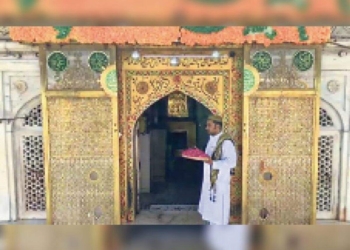Pipe bridges inspired by two and a half thousand years old Persian technology are serving as an important link between the Sangam at Maha Kumbh and the ‘Akhara’ area spread over 4,000 hectares.
More than 1,000 people worked at least 10 hours a day for more than a year to make the casks needed to build thirty bridges.
More than 2,200 black floating iron capsule-like casks have been used to construct the bridges to facilitate the movement of vehicles, pilgrims, sadhus and workers at the world’s largest cultural and spiritual event. The weight of each barrel in this is five tons and it can bear only this much weight.
Additional District Magistrate of Mahakumbh Nagar, Vivek Chaturvedi said that these bridges are working as an important link between Sangam and Akhara areas.
He told ‘PTI-Bhasha’, “These bridges are an integral part of Mahakumbh, which is necessary for the movement of huge crowd. However, these require constant monitoring to ensure smooth movement and safety of devotees round the clock. We have installed CCTV cameras on each bridge and the footage is continuously monitored through the integrated command and control centre.”
Pipe bridges were first built in 480 BC when the Persian king Xerxes I invaded Greece. The Zhou dynasty in China also used these bridges in the 11th century BC.
The first bridge of this type in India was built over the Hooghly River between Howrah and Kolkata in October 1874.
Designed by British engineer Sir Bradford Leslie, wooden barrels were installed in this bridge. Due to damage caused by a cyclone, it was finally demolished in 1943 and replaced by Rabindra Setu, now known as Howrah Bridge.









